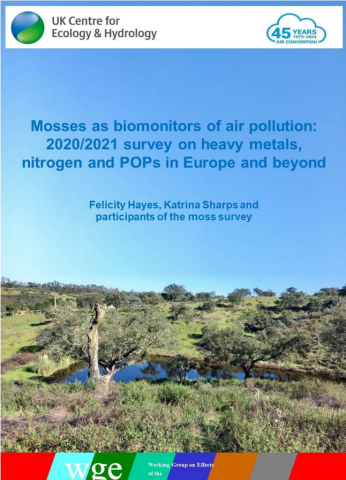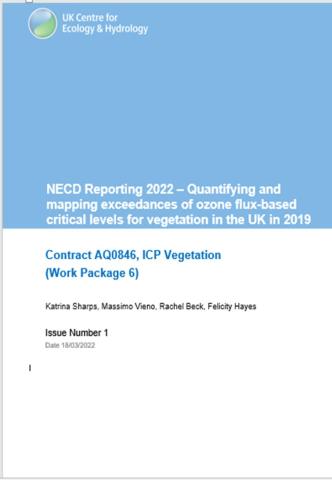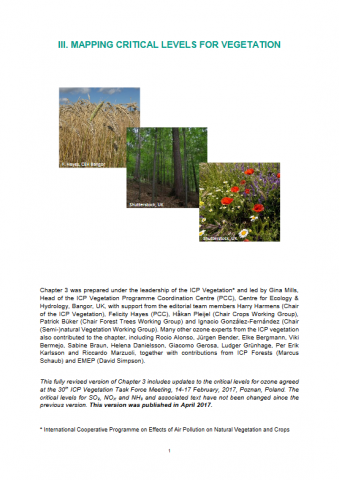
Over 16th and 17th May 2023, Manchester Metropolitan University (MMU) played host to CAPER 2023. CAPER (Community of Air Pollution Effects Researchers) brings together academics, students, consultants, practitioners, and policy makers to debate the latest directions in air pollution research and policy in relation to its ecological impacts. Delegates were mainly from the UK, but representatives from Ireland and Portugal were also present. In all, there were 47 registered participants, and for the first time since the Covid pandemic, the meeting was entirely ‘in person’. This approach enabled lively discussions from the first to last, around a broad array of talks, a field trip, and an evening poster session followed by dinner. There was even a visit from erstwhile CAPER participant and ex-British Ecological Society President, and now Vice Chancellor of MMU, Malcolm Press.
Reflections on the field excursion
The meeting began, at least for some, with a morning meeting at Chester St to get the coach to Little Woolden Moss, located to the west of Manchester, near Irlam. There, local organisers Chris Field and Simon Caporn, together with Anna Keightley and Andy Osborne, showcased a reintroduction experiment on a former peat extraction site. We saw how Sphagnum has been grown in an area that had historically high levels of air pollutants that would, previously, have led to Sphagnum’s demise. We also observed successful growth trials of Sphagnum moss as an additive to peat-free growing media, essential if the horticultural industry is to move away from peat. The trials, led by plant propagation company Beadamoss®, tested different top-down irrigation schemes (sprinklers vs drip irrigation), and Sphagnum planting methods (plugs vs gel spreading) and showed it was possible to establish and harvest Sphagnum from bare peat. Nursery trials have demonstrated good compost properties such as water-holding and nutrient retention. There is even potential for a win-win with this approach – greenhouse gas measurements show that the rewetting of the peatland has led to a reduction in CO2 emissions, and there has been very limited increase of methane (CH4) due to careful control of the groundwater level. However, big challenges remain the scaling-up from the experimental plots (Figure 1) to a commercial enterprise. Nevertheless, the drive for a commercial enterprise is strong, with ongoing discussions around the use of the surrounding agricultural areas for paludiculture and wetter-farming as a viable, sustainable alternative for farmers to conventional high-value crops such as salad leaves that grow on drained peat.
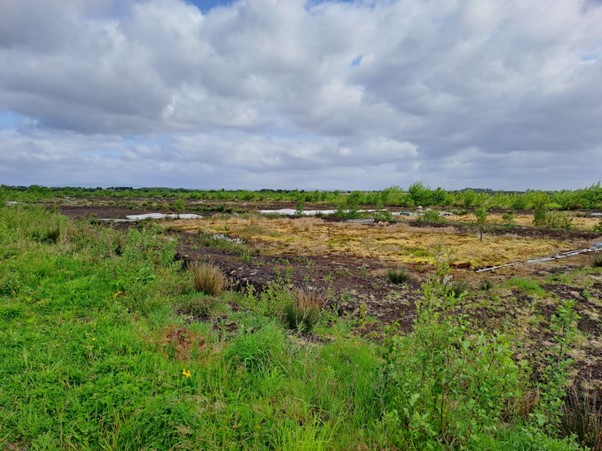
Figure 1: Former experimental Sphagnum farming plots at Little Woolden Moss
Beyond the Sphagnum farming trials, large scale restoration of the extracted peatland is taking place, led by Lancashire Wildlife Trust. There are interesting lessons from a restoration perspective here too. The historical extraction of peat helps ensure the success of the transplants: contaminated material with high pollutant levels, partly associated with the previous heavy industry around the area, was removed during the peat extraction. This allowed the Sphagnum reintroduction to occur on somewhat of a ‘blank slate’. This contrasts with, for instance, restoration on former agricultural sites where high nutrient levels continue to pose a problem for bolstering biodiversity values. However, it could be that this ‘blank slate’ compromises the ability of Sphagnum to persist after reintroduction, potentially through inappropriate microclimatic conditions and/or through biotic mechanisms.
As we moved elsewhere, we discussed the use of other biota to help with increasing the biodiversity value of the site. We were shown how introduction of cotton grasses (Eriophorum angustifolium and Eriophorum vaginatum) had also been used to help with Sphagnum reintroduction, while mention was also made of using plugs with mixed Sphagnum species, in an attempt to ensure, regardless of the exact microhabitat conditions, that at least one of the Sphagnum species would be suited to the given location. Unfortunately, in one area, the approach had not been so successful: another airborne ‘menace’, crows rather than pollutants, uprooted the Sphagnum plugs. However, the cotton grasses themselves, planted as part of the Interreg funded Care-Peat project, were spreading well, demonstrating their potential to rapidly re-vegetate bare peat (Figure 2), and providing potential habitat, together with cross-leaved heath (Erica tetralix), to help with the reintroduction of the butterfly species Large Heath (Coenonympha tullia), formerly known as the Manchester Argus. This will presumably be a watchful addition to the species at the site! Sadly, some watchers may be required, as anti-social behaviour is an issue at the site, even leading to the recent destruction of a bird hide and ‘bog oaks’ – tree trunks that had been preserved in the peat for thousands of years but subsequently burnt in an arson attack. Note also the presence of silver birch, which require continued management, usually involving cutting and then stump painting with glyphosate, to prevent unwanted community change.
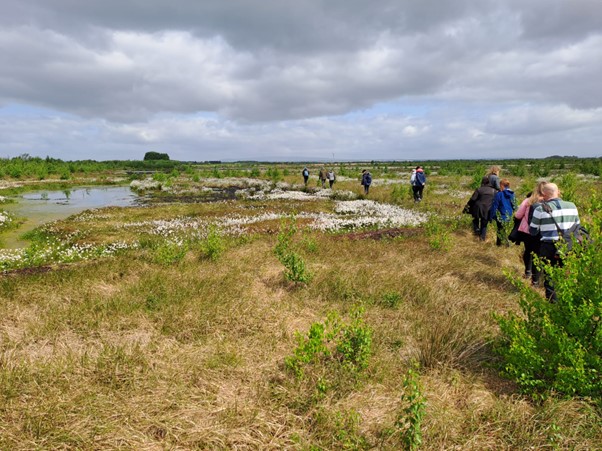
Figure 2: Cotton grasses spreading across a former peat extraction site.
Reflections on the meeting
After returning to Manchester, we joined those who had been unable to attend the field trip and chatted over lunch, prior to the meeting formally opening in the afternoon. Delegates were then engaged with a series of talks ranging from how to integrate air pollution considerations in government biodiversity targets to research that is just beginning on ozone impacts on mixed-species tree communities; the manipulation of ammonia (NH3) profiles in forest ecosystems in Sri Lanka and Scotland (and the assessment of sensitivity of soils, ground vegetation and lichens to NH3); and, exciting monitoring plans to understand the impact of agricultural changes on habitat condition through Catchment Sensitive Farming. There were also animated discussions on recent emissions trends and critical loads, and whether an apparent but still-to-be-confirmed decline in NH3 in the UK is real, or due to measurement interruptions during Covid. Perhaps some of the dynamic can be attributed to large-scale culling of poultry associated with the latest bird flu outbreak. One talk highlighted the types of ecological questions that can be considered in the near future, including whether air pollution has direct impacts on animal species and what ecological recovery from air pollution actually looks like. Exciting developments in the APAS (Air Pollution Assessment Service) tool (formerly known as AERIUS) were also shared with the group. The updates to this tool will allow developers and regulators to understand the likely emissions profile associated with planning decisions near to sensitive habitats, at fine scale, and allow incorporation of ‘offsetting’ activities, including on adjacent land where ‘willing neighbours’ are present.
Towards the end of the late afternoon session, the Vice Chancellor of MMU, Malcolm Press, found time in his busy schedule to address the CAPER delegates. As a researcher who started his PhD examining moss responses to air pollution in the 1980s, Malcolm reflected on the importance of well-designed field experiments and the need to have long-term monitoring to help understand effects of air pollution. Malcolm also noted the friendly nature of the CAPER meetings, and how important the people were, and continue to be, to its success. Not for the first time, this listener heard how the types of discussions that take place at many meetings have apparently become less adversarial over time!
After such a full afternoon of talks, delegates were able to quench their thirst at the evening poster session, where topics ranged from concordance between modelled and measured N deposition in Northern Ireland, the distribution of mosses in relation to air pollutant profiles, and the use of mycorrhizal fungi as indicators of heathland health. In some cases, the posters provided additional information to that given in the talks, allowing more in-depth discussion and exploration of issues raised in the oral presentations. Delegates then enjoyed an evening meal at a local curry house, in the company of old friends and new acquaintances.
The second day was also packed full of talks and discussion time, starting with in-depth presentations on the review of NOx critical levels, the updated empirical critical loads for nitrogen with a focus on bog habitats, and the implications of ozone for wheat yields and deciduous woodland biomass, in the light of emission scenarios associated with the implementation of the Gothenburg Protocol. Themes that emerged from these talks included the interpretation of the evidence that is available for understanding air pollution impacts on ecosystems, and how that can be translated into critical levels and critical loads. After coffee, where discussions didn’t stop, more talks focussed on the ecological effects of air pollution. This session spanned a range of pollutants and organisms, from N deposition effects on butterflies to ozone impacts on vegetation spectral signatures, as well as effects of air pollutants generally on mycorrhizae. A particularly thought-provoking question was raised in regards to NH3 impacts on lichens and bryophytes – high levels of NH3 are associated with the deterioration of structure such that all that is left of the vegetation is a ‘slime’. However, observations have shown that this slime can be found adjacent to bryophytes that remain apparently unaffected. So, if you go to a site and see slime - can this be attributed to NH3? This is very important to consider as pressures mount on farmers to potentially change agricultural practices to avoid harmful emissions.
After yet another animated lunchtime full of discussion, the final session of the conference considered recovery indicators in river and lake systems as the impacts of highly acidic deposition in the 1970s and 1980s start to reverse. In some cases, rapid and sometimes unexpected changes have been observed, including a remarkable increase in dissolved organic carbon, which has implications for water companies given the need to remove DOC prior to chlorine addition when ensuring safe drinking water supplies. The final two talks highlighted opportunities for further networking, with an introduction to the new COST action CLEANFOREST (Joint Effects of Climate Extremes and Atmospheric Deposition on Forests in Europe) and an invitation to join Natural England’s expanding long term monitoring network (as a volunteer surveyor) as well as encouragement for students to analyse data available through the Access to Evidence portal. For further information on these initiatives contact Silvana Munzi (CLEANFOREST; ssmunzi@ciencias.ulisboa.pt; see also: https://www.cost.eu/actions/CA21138/) or Dan Pedley (Natural England; daniel.pedley@naturalengland.org.uk). For the long term monitoring network, you can also contact ltmn@naturalengland.org.uk and if you are interested in data available at Natural England sites, check this website out: https://publications.naturalengland.org.uk/category/5316639066161152.
A big thanks to Chris and Simon for their generous hosting of the event (as well as comments on this blog!), and to everybody from session chairs, speakers, and the audience for their contributions that made the event such a success. In my mind, there was no question that the in-person nature of the event helped generate new ideas and helped build new interactions, as well as strengthen existing collaboration. It was particularly helpful for early-career participants to make new contacts and see the types of questions that government and regulators have to wrestle with. Watch this space for details about the craic around CAPER 2024. We hope to see you there!
Blog by Mike Perring, UKCEH (MikPer@ceh.ac.uk)
Photos - Copyright: Mike Perring.
